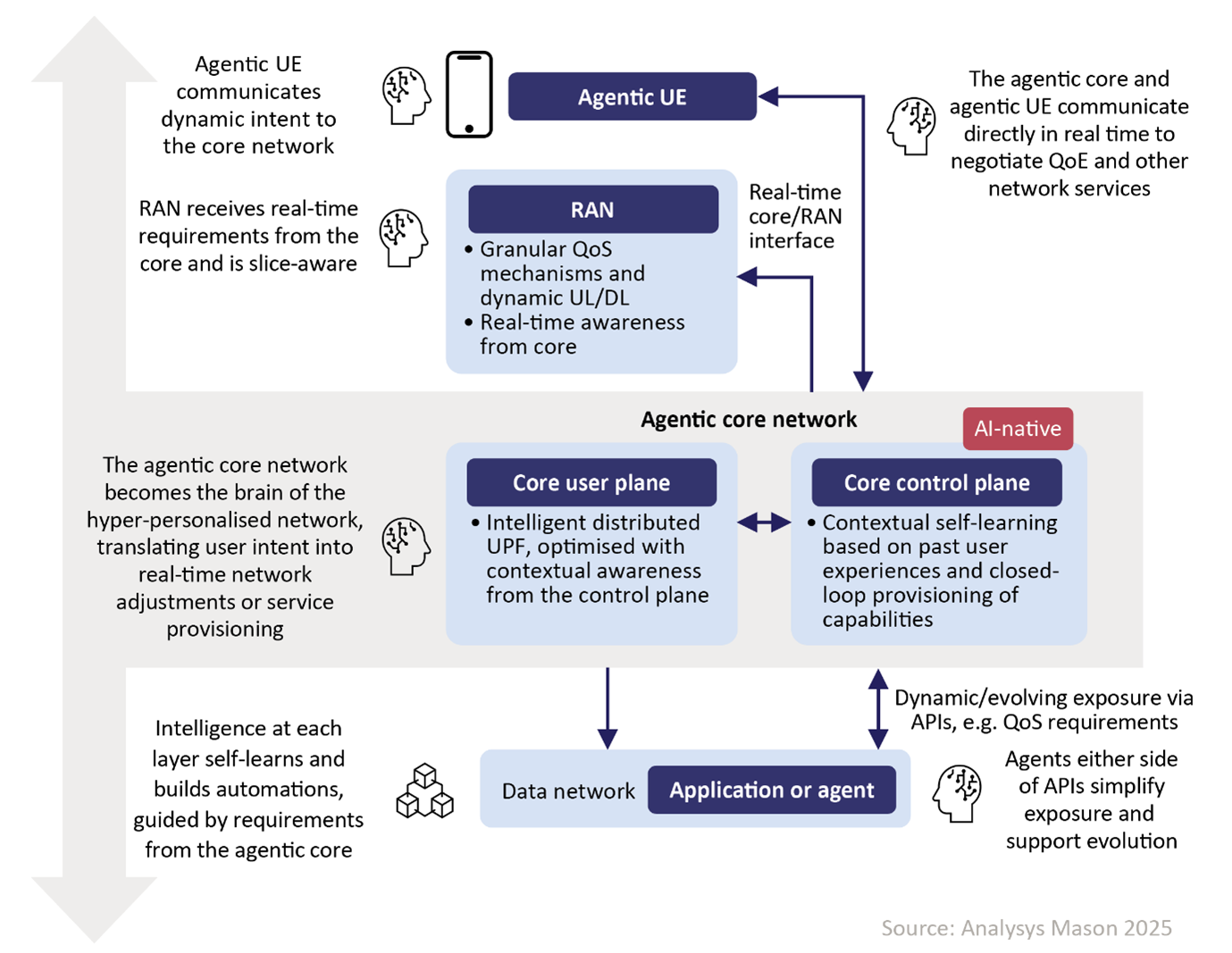Enabling the era of hyper-personalisation through agentic 6G networks
13 November 2025 | Research and Insights, Strategy
James Kirby | Adaora Okeleke | Gentiana Shiko | Janette Stewart | Caroline Gabriel
Report | PDF (27 pages) | AI
The successful delivery of hyper-personalised services could have a dramatic impact on user experience and on operator key performance indicators (KPIs). Imagine if mobile networks could tailor service quality in real time, through understanding of user behaviours. For a commuter on a busy train to work, this could mean their tailored experience remains unbroken and adapts to fit the application(s) in use as a user device moves through a busy station, onto a high-speed train, and into a taxi at the end of their journey. Throughout their journey the user may switch between multiple applications on their user device (video calls, web browsing, making purchases and playing a mobile game). This is what hyper-personalisation services can look like.
Operators that deliver hyper-personalisation will be rewarded with customer loyalty, increased usage and, possibly, willingness to pay higher fees for tailored services. In this paper, we illustrate how hyper-personalised connectivity services could be enabled by mobile networks beyond 2030 (6G), whose architectures could adapt mobile networks to interact with AI agents in any device or application in any location. Stakeholders are already showing interest by introducing AI agents in user equipment. Nonetheless, the technology requirements dictating 6G networks are complex. Defining these requirements in a way that will allow AI agents to be implemented successfully in mobile networks will be the true enabler of agentic AI. The roll-out of full hyper-personalisation services is not yet possible, however the market is shifting to allow these changes to take place.
Figure 1 below gives an indication of the system architecture that will be needed to support these new capabilities.
Figure 1: A potential 6G agentic network architecture to support hyper-personalisation

Questions answered in this report:
- What is service hyper-personalisation?
- What use cases might the implementation of agentic AI into telecoms networks and user devices enable?
- What are the key challenges of achieving hyper-personalisation within current 3GPP specifications and deployments?
- How can 6G networks that have been integrated with AI agents work together with mobile devices, also integrated with AI agents, to enable the delivery of hyper-personalised services?
- What questions and challenges must be addressed as part of standardising and commercialising an agentic AI 6G vision?
Who should read this report:
All stakeholders in the telecoms and AI industries, as well as working groups on telecoms standardisation and mobile industry stakeholders.
This perspective was commissioned by an industry stakeholder. Usage is subject to our disclaimer and copyright notice and the contents may be distributed with Analysys Mason cited as the source. Analysys Mason does not endorse any of the stakeholder’s products or services.
Enabling the era of hyper-personalisation through agentic 6G networks
Download reportAuthors

James Kirby
Senior Analyst
Adaora Okeleke
Principal Analyst, expert in AI and data management
Gentiana Shiko
Manager
Janette Stewart
Partner, expert in spectrum policy, pricing and valuation
Caroline Gabriel
Partner, expert in network and cloud strategies and architectureRelated items
Predictions
GPUaaS revenue will quadruple in the next 5 years, powering new data-centre investment opportunities
Predictions
Businesses will discover that AI can become kryptonite if they do not grasp how to wield this superpower
Predictions
AI adoption is surging, but <25% of portfolio companies’ AI tools will fully succeed in 2026

